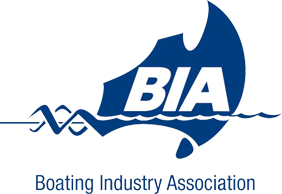Standing Rigging Inspections, Maintenance and Replacement
11 December 2020Standing Rigging Inspections – One part of sailboats and yachts that must be inspected, maintained, or even replaced when necessary is the standing rigging. It is comprised of fixed lines, wires, or rods that are designed to support each mast or bowsprit on sailing vessels. These specific components likewise reinforce the spars against increased loads when wind interacts with the sails.
Standing Rigging Inspections
A Standing Rigging Inspection must be done first to check the condition of the standing rigging, as issues with the standing rigging if not fix correctly and quickly can result in the mast falling down. When conducting inspections, you can easily identify components that require repairs and replacements.
Normally, the replacement of standing rigging should be done every 10 years. Generally, insurance companies today require the standing rigging be replaced approximately every 7-10 years, depending on how often, or how far the yacht is sailed, they may require the rigging to be replaced earlier than 7 years. (Check with your insurance company, as policies may vary) Insurance companies also commonly request a professional rigging inspection and survey of the yacht when a used boat is sold or if a new policy is to be obtained. If the standing rigging is in excess of 7-10 years, most insurance companies will not insure the yachts rigging.
When carrying out standing rigging inspections, you must start at the masthead. Looking closely for any signs of corrosion, cracks, or breaks of any kind in the standing rigging (ei. In the wire, terminal ends, rod, toggles, pins, backing plates etc.) as you are slowly lowered down the mast. When we conduct rigging inspections, we check over all mast and sailing components, all the way down to the chainplates. Other components that must be checked for any damages or performance issues include swivels, back and forestay fittings, tang plates and toggle fittings, shrouds, swaged terminal ends, mainsail track, spreaders, turnbuckles, chainplates, blocks, running rigging, sheaves, and spars etc.
Riggtech recommends getting an annual professional rigging inspection to check over all sailing components to ensure smooth and precise sailing, regardless of the conditions you’ll face.
Maintenance
Whether you are a racer or cruiser, it is important to maintain your yacht. Here are some parts of rigging that need to be checked and ways on how to maintain them. You can do it yourself or if you don’t have the time, we can do it for you!
- Halyard Swivels: Oiling halyard swivels makes releasing clips or removing twists in rope easier and smoother. (Purchase Harken OneDrop from our online shop)
- Sail Tracks: To make hoisting and lowering sails easy and smooth, it is a good practice to spray the tracks or bolt rope with some lubricant, we recommend Harken Sailkote. It is a silicon spray that stays extremely slippery after it dries. Head to our online shop to purchase some!
- Furler Bearings: Greasing furler bearings is quick and easy and makes furling sails in and out a breeze. Make sure to drop the sail to grease the bearings in the swivel and in the drum.
- Sheaves: Sheaves in the mast, on the deck or in blocks should be oiled, so they run smoothly, preventing corrosion and seizure of the bearings or sheaves. (Purchase Harken OneDrop from our online shop)
- Split Pins and Split Rings: Checking split pins and split rings is important to prevent clevis pins from falling out and leading to catastrophic failures. Checking for sharp edges in these is also important to prevent the sail from catching and potentially ripping. We recommend using amalgamating tape, electrical tape or silicon for protection and prevention.
Replacement
The most efficient and cost-effective way to replace the standing rigging to a yacht is to remove the entire mast and rigging from the yacht. This way you can do all the stays at the same time, you can make the pairs the same lengths and it is also much easier to check over the whole mast and make any repairs and replacements where needed. At Riggtech we make sure we replace every standing rigging component from the top pins to the bottom pins, so there isn’t any weak link.
The alternative is replacing the standing rigging while the mast is in the boat, we do not recommend this, as you have to support the rig systematically as you de-tension, remove, make and replace individual stays to the mast. This is a very time-consuming process, because it involves a lot of mast climbing, making individual stays and tensioning and de-tensioning, it can also be extremely dangerous if you don’t know what you’re doing.
Components that have either corroded or have obtained huge cracks and damages should be replaced right away to avoid compromising the whole standing rigging. If you want to know more about its inspection, maintenance, and replacement, feel free to contact us at Riggtech.
Optimized by: Netwizard SEO


